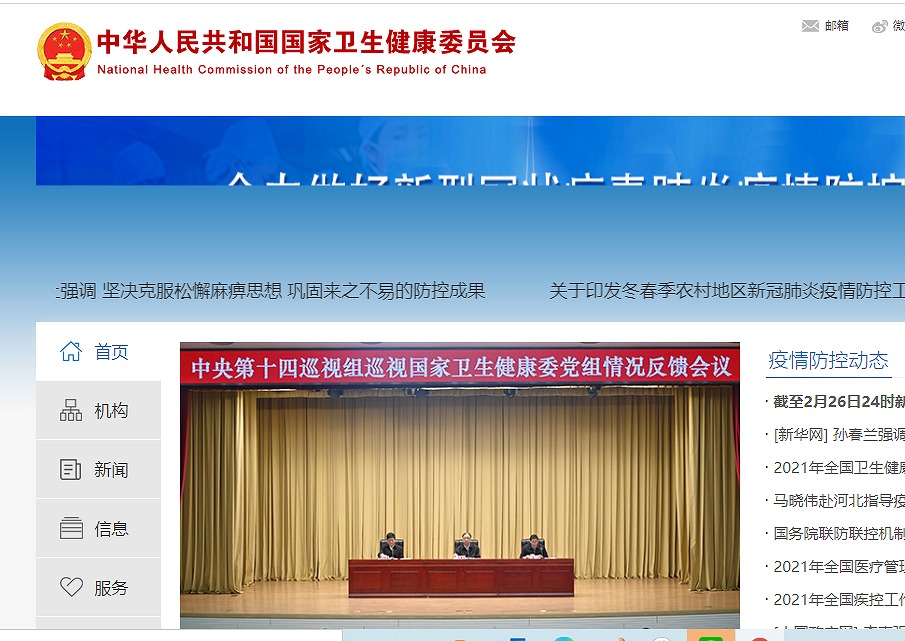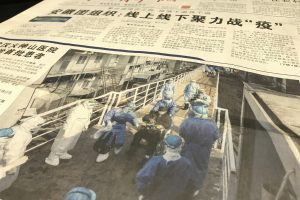
By Norihide Miyazaki and Ya Jung Chih, InFact
In an announcement on January 20, the Wuhan Municipal Health Commission published a summary of the infection situation of January 18 and 19. The highest number of new infections in a single day so far was 17 on January 17, but both days saw a sharp increase, far exceeding that number. The total number of newly infected people for both days rose to 136, with a third person having died. It was now clear that an outbreak had occurred.
“From 00:00 to 24:00 on January 18, 5 people were cured or discharged, 59 were newly infected, and 1 died. From 00:00 to 24:00 on the 19th, 1 patient was cured or discharged, and 77 were newly infected.
Wuhan City has further strengthened screening of patients suspected of pneumonia caused by the new coronavirus infection based on a newly revised diagnosis and treatment plan. The city has also established rules for pre-screening, triage and fever outpatient operations at medical institutions at all levels.
Simultaneously, the test plans were further improved and optimized. Test speeds were also accelerated. A group of national, provincial and municipal experts confirmed 59 new cases of pneumonia caused by the new coronavirus infection on January 18, and 77 new cases of pneumonia caused by the new coronavirus infection on January 19 based on a comprehensive assessment of clinical symptoms, epidemiological history and etiological test results. 136 new cases were confirmed altogether.”
Of those 136 patients, only the following information was revealed in this summary:
“Of the 136 patients, 66 were male and 70 were female. The youngest was 25 years old and the oldest 89 years old. All onset dates were on or before January 18, 2020. The first symptoms are mainly fever, cough and chest tightness, and difficulty breathing. According to the newly revised treatment plan where patients are classified as mild, severe, or serious, 100 were classified as mild, 33 severe, and 3 serious (including one death).”
The report also summarizes the total number of cases of both days including those up to 10 pm on January 19.
“As of 10:00 pm on January 19, the total number of pneumonia cases reported in our city due to the new coronavirus infection was 198. Of these, 25 were cured or discharged from the hospital, and three died. All 170 patients (including 126 with mild symptoms, 35 with severe symptoms, and 9 with serious symptoms) are under isolation treatment at designated medical institutions in Wuhan. Of the 817 close contacts tracked, 727 have already been released from medical observation, and 90 are still under medical observation. No relevant medical conditions have been found among the close contacts.”
January 20, the date when the Wuhan Municipal Health Commission made the above announcement, is also a turning point in the Chinese authorities’ response to the new coronavirus. President Xi Jinping ordered that, “We must make every effort to prevent and control this disease.” Prime Minister Li Keqiang, hosting an executive meeting of the State Council of the People’s Republic of China, where they designated the novel coronavirus as a Class B infectious disease in accordance with the Law on the Prevention and Treatment of Infectious Diseases, with concordant measures put in place to deal with it. In the afternoon of the same day, the State Municipal Health Commission held a press conference, where a team of experts clarified the fact that the new coronavirus is human-to-human infectious. (we will examine the contents of this press conference in another article).
In addition to the infection situation in the city mentioned above, the Wuhan Municipal Health Commission posted on its website at 7:13 pm on this same day (20 January) a list of medical institutions with outpatient fever clinics and designated medical institutions in the city indicating ① 61 fever outpatient clinics ② 9 designated medical institutions (3) 25 emergency medical experts in the province and the city. A list showing the specific names of medical institutions in each district was included in this post. In line with the central government, Wuhan City seems to have embarked on a full-scale response to the novel coronavirus.
So far, we have mainly followed the announcements made by the health authorities of Wuhan City, but from this time on, the State Municipal Health Commission, the main national health authority, also started to make announcements at a higher frequency, separately from Wuhan City. On January 19, the State Municipal Health Commission released the following information titled “The National Health and Sanitation Commission is Actively Promoting the Prevention and Control of Pneumonia Caused by Novel Coronavirus Infection.
“After the outbreak of pneumonia of unknown origin in Wuhan City, Hubei Province, our committee has immediately dispatched a national working group and a team of experts to Wuhan to work with Hubei Province and Wuhan City to implement preventive control measures based on the principle of local management.”
In addition, the commission revealed that a national effort had been launched.
“Our commision has immediately organized units from the Chinese Center for Disease Control and Prevention, the Chinese Academy of Medical Sciences, the Chinese Academy of Sciences, and the Institute of Military Medicine of the Academy of Military Sciences to conduct parallel laboratory testing of case samples. On January 8, 2020, the commission tentatively confirmed that the novel coronavirus was the pathogen of infections.”
In order not to fuel anxiety, the commission however also announced the following:
“According to the research and judgment of experts, the current infection can be prevented and controlled. However, the source of the novel coronavirus has yet to be uncovered, the route of transmission also is not yet fully understood, and the virus must be closely monitored for possible mutations.”
Additionally on the same day, the State Municipal Health Commission announced its decision to designate and control pneumonia caused by new coronavirus infection as a legal infectious disease.
“In accordance with the relevant provisions of the Law on the Prevention and Treatment of Infectious Diseases and based on the current understanding of the pathogenesis, epidemiology and clinical characteristics of the pneumonia caused by the novel coronavirus infection, the State Municipal Health Commission, with the ratification and consent of the State Council, has decided to designate the novel coronavirus as a Class B infectious disease and adopt preventive control measures for Class A infectious diseases. Pneumonia caused by the novel coronavirus infection will be included in the management of the legal infectious disease, and the people’s governments at all levels, health and health administrative departments, other government departments, and medical and sanitary institutions will, in accordance with the law, isolate and treat infected persons, isolate and medically observe close contacts, and prevent and control the epidemic of pneumonia caused by the novel coronavirus infection as a team.”
In case you are wondering, SARS and avian flu are also classified as Class B infectious diseases. The measures taken are those applied when dealing with outbreaks of infectious diseases classified as Class A, such as plague and cholera. So, when is a Class A measure taken? It is when the nature of the disease is not clear.
Thus while it is classified as a Class B disease, is being handled as a Class A disease. This seems to be an indication of the uncertainty or disarray within the State Health and Sanitation Commission.
The original article in Japanese is here.
(To be continued)





